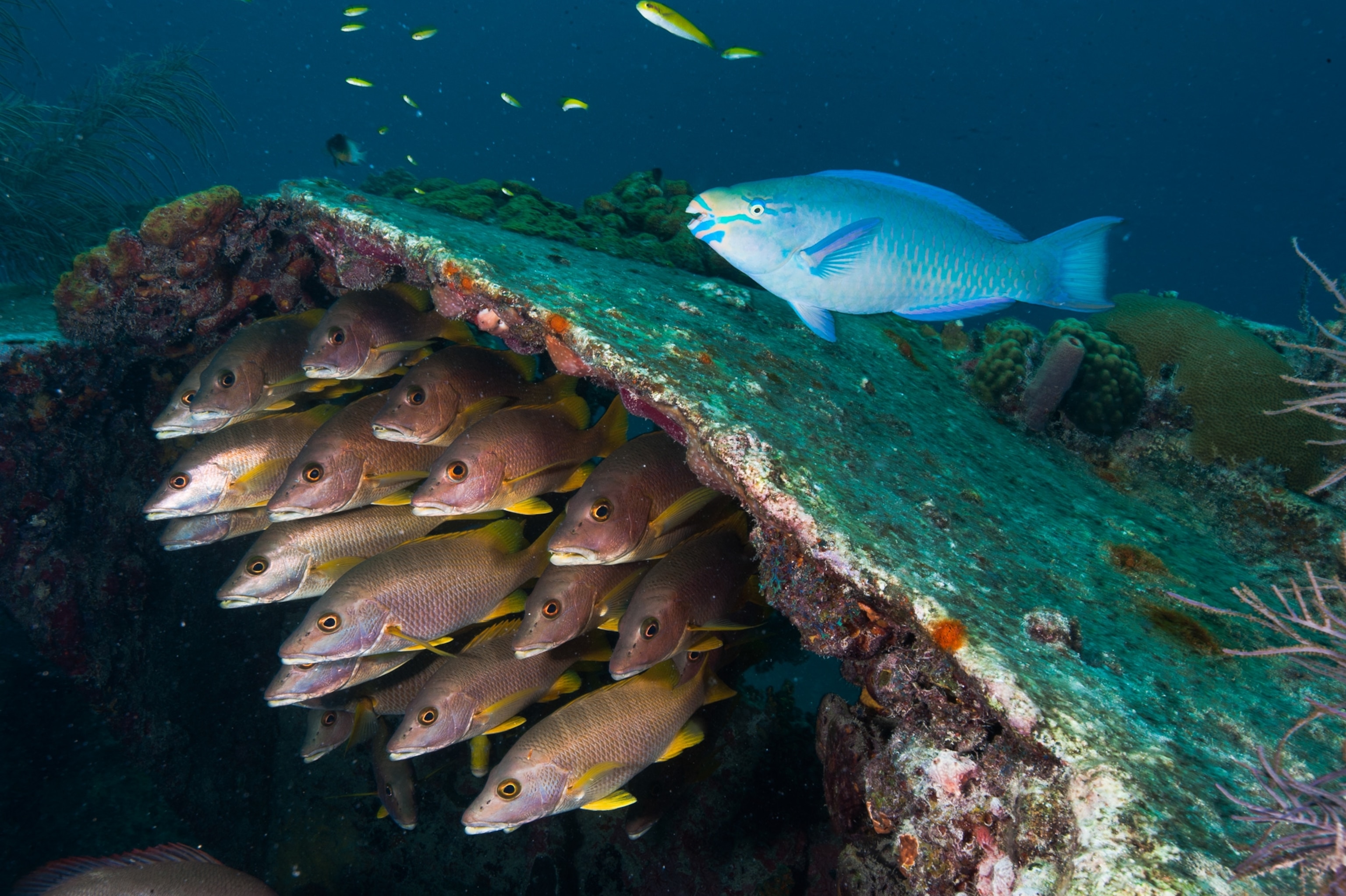
U.S. Invites Public to Submit Nominations for Marine Sanctuaries
Obama administration hopes to protect more pristine ocean habitat.
Ordinary Americans will be able to nominate areas of the ocean off of U.S. land and parts of the Great Lakes to be considered as new national marine sanctuaries, the White House announced Tuesday.
"We have the opportunity to galvanize people to protect their local areas," said John Podesta, President Barack Obama's counselor on climate change and environmental affairs, in announcing the policy, which reinstates a process that had been discontinued in 1995.
Podesta said that helping designate specific sanctuaries makes marine conservation more concrete in the public mind than considering "the vast ocean."
Marine sanctuaries are like national parks in the water, with restrictions on activities like fishing and resource development to protect wildlife.
The new open nomination process will allow the National Oceanic and Atmospheric Administration to gauge local interest in protecting marine areas, Podesta said. The policy change was provoked by more than 18,000 comments from the public in recent years.
NOAA oversees 14 sanctuaries, covering 150,000 square miles (390,000 square kilometers). Well-known examples include the Monterey Bay National Marine Sanctuary in California and the Hawaiian Islands Humpback Whale National Marine Sanctuary.
Jason Patlis, the president and CEO of the nonprofit National Marine Sanctuary Foundation, said the change would encourage "democratic, grassroots action."
"We've been waiting 20 years for this"—since allocated funding for new marine protected areas ran out, he said.
Sanctuary Benefits
Podesta said that marine sanctuaries can serve as engines of economic growth, attracting tourism and helping fish stocks recover, leading to better harvests for fishers.
Geoff Shester, the California campaign director for the advocacy group Oceana, agreed. "The entire tourism economy here in Monterey Bay is based on the fact that we have this amazing sanctuary," he said.
Marine sanctuaries also help safeguard biodiversity and build resilience into natural systems amid climate change, said Podesta, who was speaking in Washington at the 13th annual Capitol Hill Ocean Week.
In April, NOAA released a proposal to expand the boundaries of the Gulf of the Farallones and Cordell Bank national marine sanctuaries off north-central California. A plan submitted this month also aims to expand protections inside the Florida Keys National Marine Sanctuary.
Oceana's Shester said his group is already preparing a proposal to consider an area off Oregon that has "banks with huge, ancient coral and sponge reefs."
The group will also likely nominate other areas where there are "existing gaps in the current system," he said.
Related Topics
You May Also Like
Go Further
Animals
- How to see Katmai's famous brown bears up close—and stay safeHow to see Katmai's famous brown bears up close—and stay safe
- Spiders may lure male fireflies to their death with a call of loveSpiders may lure male fireflies to their death with a call of love
- 6 animals Nat Geo staff think are very demure, very mindful6 animals Nat Geo staff think are very demure, very mindful
- Why are cell phone contaminants showing up in tiger sharks?Why are cell phone contaminants showing up in tiger sharks?
- This parasite uses an army to suck out the guts of its enemiesThis parasite uses an army to suck out the guts of its enemies
Environment
- How billions of dollars are revolutionizing ocean explorationHow billions of dollars are revolutionizing ocean exploration
- Where to go stargazing in Chile according to a local astronomer
- Paid Content
Where to go stargazing in Chile according to a local astronomer - This coral reef should be dead—so why is it thriving?This coral reef should be dead—so why is it thriving?
- Inside the Native Hawaiian push to rebuild Maui after wildfiresInside the Native Hawaiian push to rebuild Maui after wildfires
History & Culture
- The eighth wonder of the ancient world may have an untouched tombThe eighth wonder of the ancient world may have an untouched tomb
- These countries banned music—but artists still found a wayThese countries banned music—but artists still found a way
- A man’s world? Not according to biology or history.A man’s world? Not according to biology or history.
Science
- How better posture can improve your overall healthHow better posture can improve your overall health
- We're having a COVID summer surge—will winter be worse?We're having a COVID summer surge—will winter be worse?
- Why home births are rising in the U.S.—especially for Black womenWhy home births are rising in the U.S.—especially for Black women
- Why the traditional Okinawan diet is the recipe for a long lifeWhy the traditional Okinawan diet is the recipe for a long life
- How billions of dollars are revolutionizing ocean explorationHow billions of dollars are revolutionizing ocean exploration
Travel
- This French region is home to the country's stretchiest cheeseThis French region is home to the country's stretchiest cheese
- How to see Katmai's famous brown bears up close—and stay safeHow to see Katmai's famous brown bears up close—and stay safe
- The women who cultivate the riches of the Ecuadorian Amazon
- Paid Content
The women who cultivate the riches of the Ecuadorian Amazon - How to plan a slow tour of the Valencia region in SpainHow to plan a slow tour of the Valencia region in Spain




